A Naval return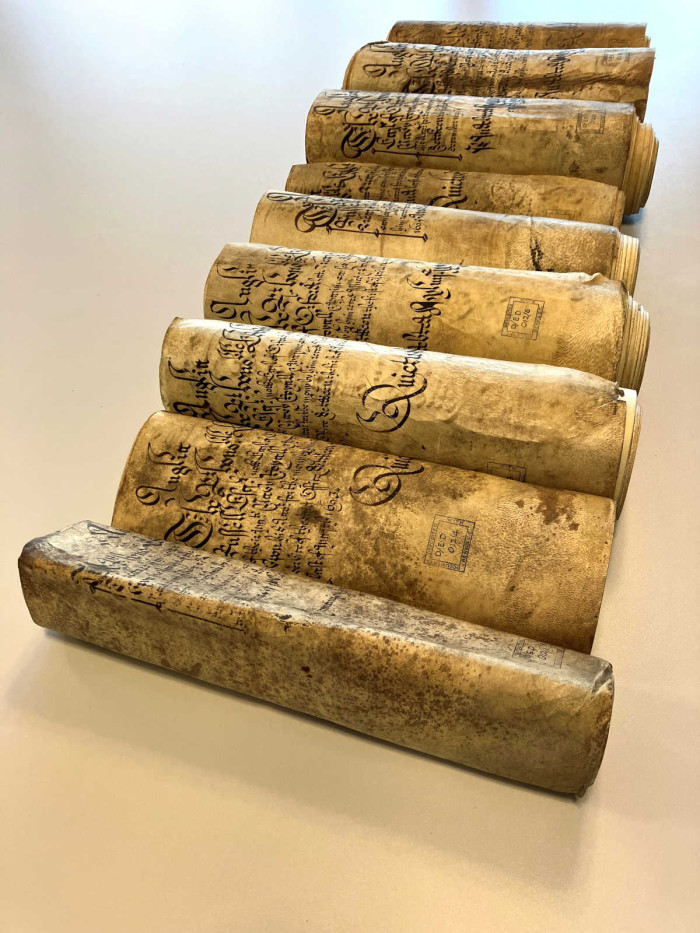
We are delighted to announce the return of some records of national importance. They are the ‘quietus’ accounts of Edward Russell (1653-1727) as Treasurer of HM Navy, covering the period 1689-1699, but created 1693-1717 (D/EZ217), and consist of ten very long parchment rolls, comprising many individual membranes, or sheets, sewn together. They show Russell’s detailed expenditure on Naval matters and include names of suppliers, ships, surgeons, etc; making them a very important source for naval history. Some relate to earlier bills received by Russell within the accounting period. The accounts were then submitted later (in some cases after several years) to the Exchequer who refunded Russell. You had to be independently wealthy for a role like this. One roll refers to the Royal African Company and Jamaica, so may possibly relate to the transatlantic slave trade. Most are for general expenses, but one is specifically for victualling (the provision of food or other stores onboard) and one for shipbuilding.
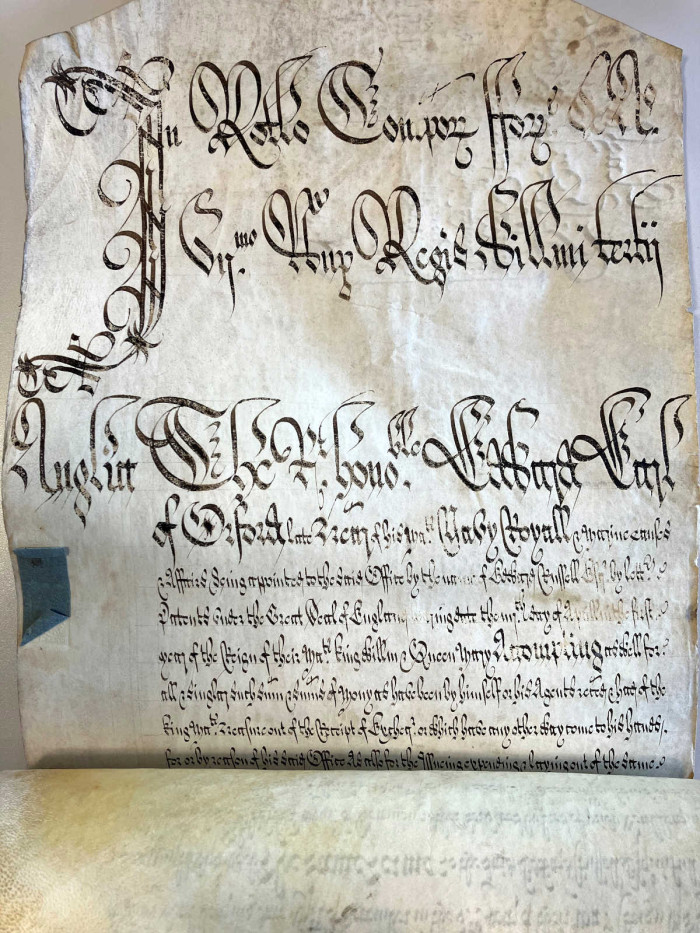
Russell (1653-1727) was related to the Hill family, later Marquesses of Downshire, who inherited his papers as he had no children. He had joined the Royal Navy in 1666 and served until 1683 when his family were disgraced following a relative’s involvement in the Rye House Plot. He was later one of the seven aristocrats who issued the invitation to William, Prince of Orange, to seize the throne from James II and become King William III. Perhaps as a reward, he was appointed Treasurer of the Navy in 1689 and promoted to the rank of Admiral. He was Commander in Chief of the Navy December 1690-December 1692 and again November 1693-May 1699. He returned to his role as First Lord 1709-1710 and 1714-1717. In 1697 Russell was created Earl of Orford.
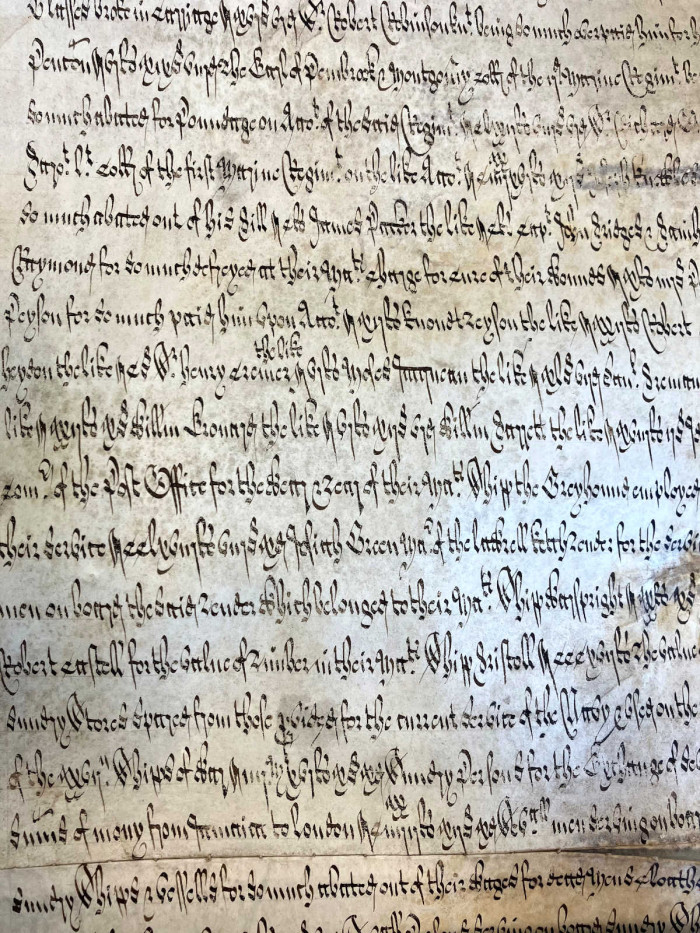
The rolls were previously catalogued as D/ED/O12/1, 4-8, and 10-13, however they were withdrawn with other parts of the Downshire archive and sold in 1989 to a private collector in the United States of America. Three, which contained material of interest to American historians, were sold on to another collector, but the remaining rolls were finally offered back to the Royal Berkshire Archives in 2022 and we are grateful to the Friends of the National Libraries for providing us with the grant to purchase them.
The Pleydell Bouveries
We are very pleased to announce the culmination of a long running project: the cataloguing of the final tranche of records of the Pleydell Bouverie family, Earls of Radnor, 1348-1945 (D/EPB). Their Coleshill estate was purchased by the Pratt family in 1626, who built the magnificent Coleshill House in the 1650s. It was inherited from them by the Pleydells (pronounced Pleddle).
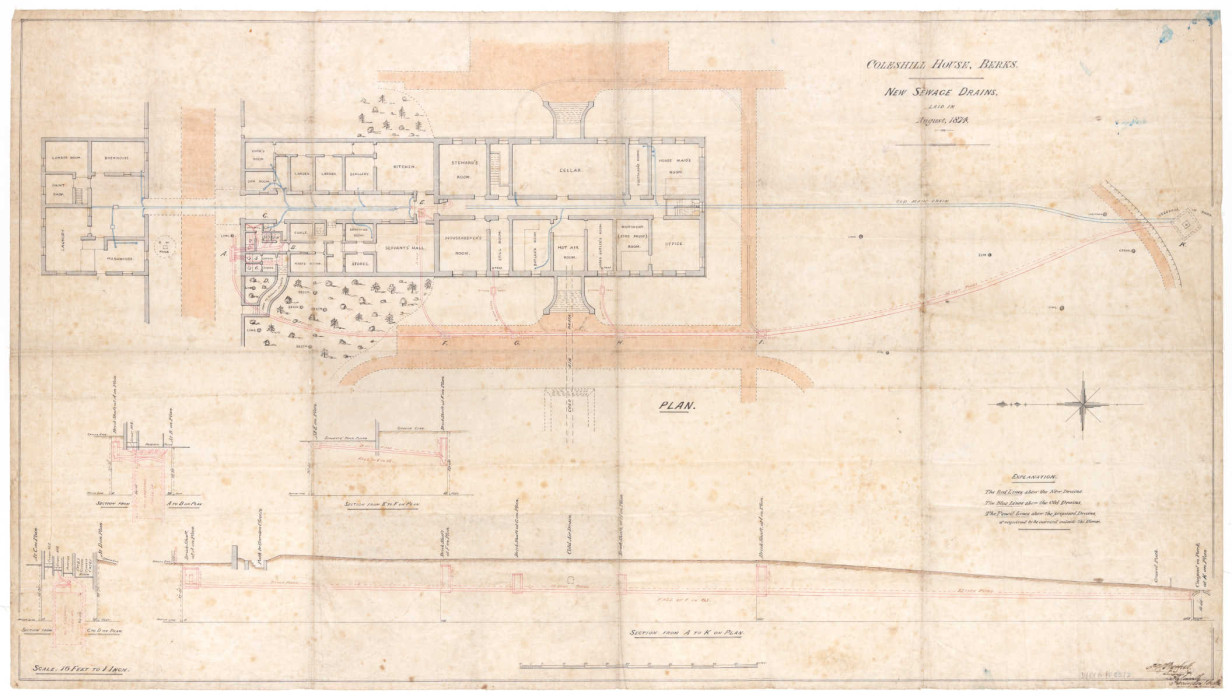
Later, Harriet Pleydell married William Bouverie, the first Earl of Radnor, and their son Jacob, the second Earl, inherited Coleshill from his grandfather Sir Mark Pleydell, taking Pleydell as an additional surname. Although his main residence was at the old Bouverie seat at Longford Castle in Wiltshire, Jacob carried out significant improvements to the house at Coleshill and landscaped the grounds. He served as Lord Lieutenant of Berkshire (the King’s representative in the county), 1791-1819, which included the crucial years of the Revolutionary and Napoleonic threat of invasion from France.
His son William settled at Coleshill in 1799 and created not one but two model farms, the first in the 1820s, and a more ambitious second one built between 1852 and 1854. The latter in particular was highly regarded by contemporaries and is a very important part of agricultural history.
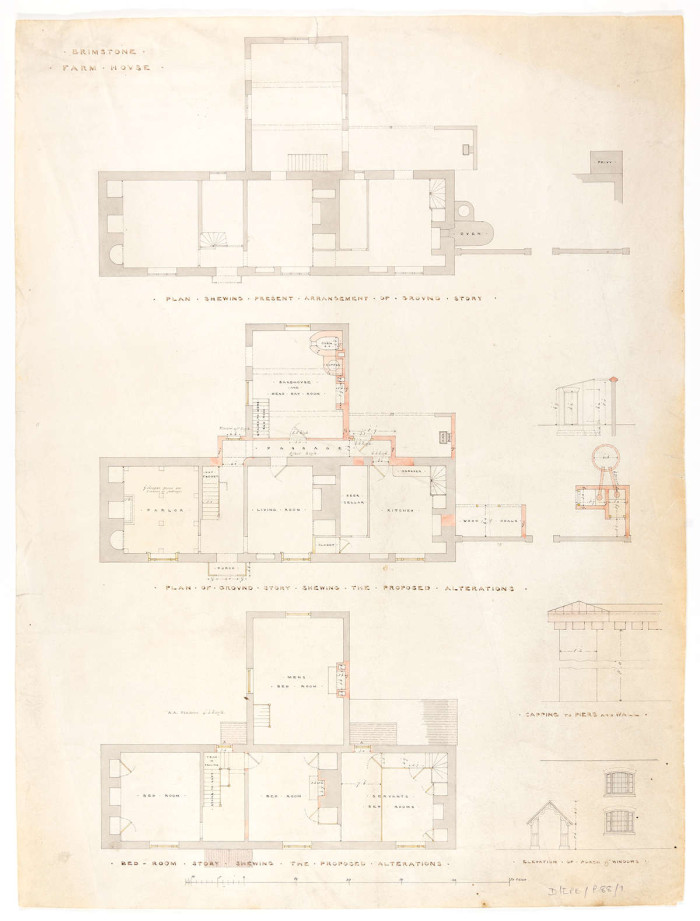
After the fourth Earl’s death in 1889 the estate was divided, and the Berkshire and north Wiltshire properties passed to a junior branch of the Pleydell Bouverie family. Most of the estate was sold to Ernest Cook in 1945, and then transferred to the National Trust, but tragically, the magnificent mansion was gutted by fire during renovations in the 1950s.
There is a wealth of material in the newly catalogued parts of the archive on agriculture for much of the 18th and 19th centuries, plus a very full series of estate cash books and ledgers, 1876 to 1923, thousands of individual invoices and detailed labour records, and an almost complete series of correspondence files, 1892-1923, and papers relating to individual farms. They combine to give a very full picture of the working of a great estate during the challenging period of the late 19th and early 20th centuries.
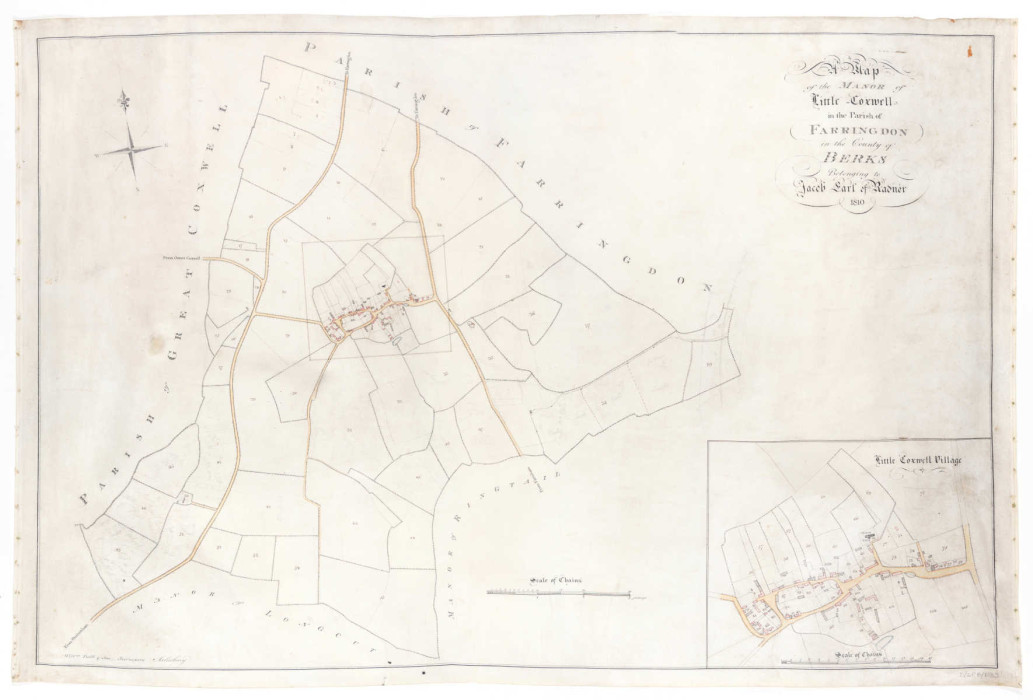
As well as the cataloguing aspect, we received a generous grant a few years ago from the National Manuscripts Conservation Trust which enabled us to carry out a much-needed and extensive programme of conservation. The records are now ready for researchers to view. You can read more about the archive in the 2023 issue of Berkshire Old and New which you can receive as a member of the Berkshire Local History Association.
Other landed families
We have also catalogued the records of the Crutchley family of Sunninghill Park, 1801-1940 (D/EX2309). These include material relating to the enlargement and rebuilding of Sunninghill Church in 1827 and records of various local charities and schools. We have received the marriage settlement of the Revd John Pannell of Bosham, Sussex, and Lucy Wilder of Purley Hall, Purley, spinster, 1817 (D/EX2905).
You can find out more about these records by searching our online catalogue. Simply enter the collection references given above in the Catalogue Reference field.
